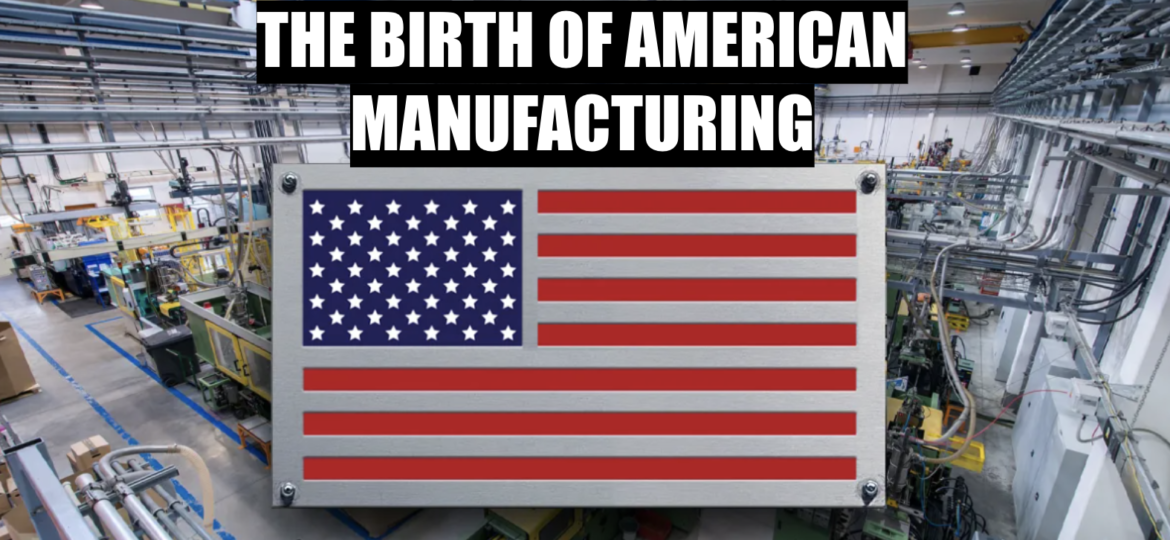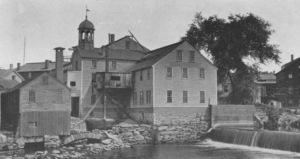
The Birth of American Manufacturing: A Journey Through History
When we think of the United States today, images of sprawling industrial complexes, advanced manufacturing facilities, and cutting-edge technology often come to mind. However, the story of manufacturing in the United States is one that spans centuries and is rooted in the country’s early history. In this blog, we will delve into the fascinating journey of when manufacturing began in the United States of America.
The Colonial Era: Craftsmanship and Self-Sufficiency
In the early 17th century, when the first European settlers arrived on American shores, manufacturing as we know it today was virtually nonexistent. Instead, the colonists relied on craftsmanship and self-sufficiency to meet their basic needs. Each colonial household produced its own goods, such as clothing, tools, and even simple machinery.
One notable exception was shipbuilding, which emerged as one of the first organized manufacturing industries in the American colonies. Shipyards in places like Massachusetts and Virginia constructed vessels for trade, fishing, and transportation. The demand for ships and the availability of abundant timber resources contributed to the growth of this industry.
The Industrial Revolution Arrives: Early 19th Century
The real transformation in American manufacturing began in the early 19th century, thanks to the arrival of the Industrial Revolution from Britain. This period marked a significant shift from agrarian and craft-based economies to industrial production. Key developments included the invention of the cotton gin by Eli Whitney in 1793, which revolutionized cotton processing, and the establishment of textile mills in places like Lowell, Massachusetts.
The Lowell System, introduced in the early 19th century, was a groundbreaking approach to manufacturing. It brought young women into the workforce and created factory towns with integrated production processes. These textile mills laid the foundation for modern factory systems and the mass production methods that would become synonymous with American manufacturing.
Transportation and Infrastructure: Catalysts for Growth
The expansion of manufacturing was closely tied to the development of transportation infrastructure in the United States. Canals, like the Erie Canal, and later, the railroad network, played crucial roles in connecting manufacturing centers with raw materials and markets. This facilitated the movement of goods and allowed manufacturers to scale up their operations.
The Mid-19th Century: The Rise of Heavy Industry
As the 19th century progressed, manufacturing in the United States diversified beyond textiles. The growth of heavy industry, including iron and steel production, machinery manufacturing, and coal mining, became prominent. The construction of the first transcontinental railroad in 1869 further accelerated economic development and industrialization.
World Wars and Beyond: The 20th Century
The 20th century saw the United States become a global manufacturing powerhouse. World War I and World War II drove massive production efforts, transforming the country into the “Arsenal of Democracy.” American factories churned out weapons, vehicles, and equipment to support the war efforts.
After World War II, the manufacturing sector continued to evolve, with new industries emerging, including electronics, aerospace, and automotive manufacturing. Innovations like the assembly line, pioneered by Henry Ford, and advancements in automation further increased productivity and efficiency.
Conclusion
The history of manufacturing in the United States is a tale of innovation, resilience, and adaptation. From the early days of colonial craftsmanship to the industrial might of the 20th century, American manufacturing has played a vital role in shaping the nation’s economy and identity. Today, as we witness the ongoing evolution of manufacturing through technology and automation, it’s clear that this journey is far from over. The legacy of American manufacturing continues to influence the world economy and remains a testament to the spirit of innovation and industriousness that defines the United States.

THE CNC SPINDLE REPAIR EXPERTS
Motor City Spindle Repair specializes in Spindle Repair in all areas, and we are able to provide quality services for below :
Horizontal Machining Centers Spindle Repair,
Vertical Machining Centers Spindle Repair,
Turning Centers Spindle Repair,
Grinding Machines Spindle Repair,
Precision Machine Tool Spindle Application Repair,
with Emergency Repair Lead Times,
We rebuild Belt Driven, Gear Driven, and Direct Driven spindles.
CONTACT US ANYTIME IF YOU’D LIKE TO CHAT WITH OUR EXPERTS OR STOP BY OUR 25,000 SF MANUFACTURING FACILITY LOCATED IN DEARBORN, MICHIGAN!
(734) 261-8600 OR EMAIL US AT SALES@MOTORCITYREPAIR.COM
*Quotations are 100% free of charge
*All quotes are accompanied by a detailed failure analysis report
*We frequently repair spindles in 2-5 business days in emergency situations
*Normal time averages 1-3 weeks for standard repairs
*We keep precision bearings, seals, o-rings, encoders, and other commonly replaced spindle parts in stock and on hand
*Always available 24 hours a day and 7 days a week for emergency repair service
*We deliver the repaired product to you
*Our repairs are balanced, test ran, and certified with a full 1 Year Warranty
*We repair or build new depending on your needs
*Guaranteed cost savings
Need a FREE ESTIMATE? Click HERE To view our most recent blog post, click HERE Have questions about ballscrews? Check out our BALL SCREW WEBSITE

